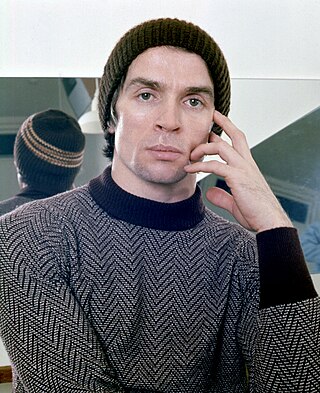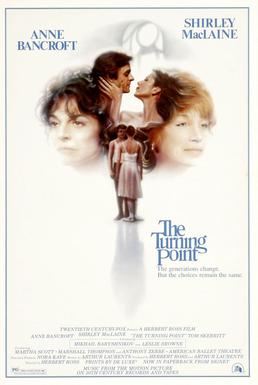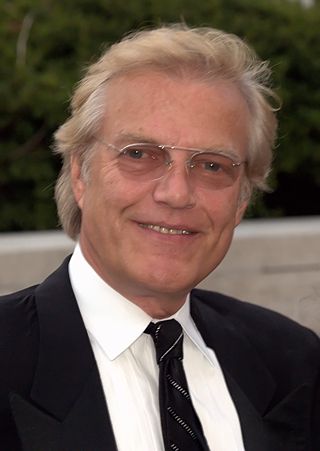
Rudolf Khametovich Nureyev was a Soviet-born ballet dancer and choreographer. Nureyev is regarded by some as the greatest male ballet dancer of his generation.

Mikhail Nikolayevich Baryshnikov is a Latvian-American dancer, choreographer, and actor. He was the preeminent male classical dancer of the 1970s and 1980s. He subsequently became a noted dance director.

American Ballet Theatre (ABT) is a classical ballet company based in New York City. Founded in 1939 by Lucia Chase and Richard Pleasant, it is recognized as one of the world's leading classical ballet companies. Through 2019, it had an annual eight-week season at the Metropolitan Opera House in the spring and a shorter season at the David H. Koch Theater in the fall; the company tours around the world the rest of the year. The company was scheduled to have a 5-week spring season at the MET preceded by a 2-week season at the Koch Theater beginning in 2020. ABT is the parent company of the American Ballet Theatre Jacqueline Kennedy Onassis School, and was recognized as "America's National Ballet Company" in 2006 by the United States Congress.
Gelsey Kirkland is an American ballerina. She received early ballet training at the School of American Ballet. Kirkland joined the New York City Ballet in 1968 at age 15, at the invitation of George Balanchine. She was promoted to soloist in 1969, and principal in 1972. She went on to create leading roles in many of the great twentieth century ballets by Balanchine, Jerome Robbins, and Antony Tudor, including Balanchine's revival of The Firebird, Robbins' Goldberg Variations, and Tudor's The Leaves are Fading. Balanchine re-choreographed his version of Stravinsky's The Firebird specifically for her. She left the New York City Ballet to join the American Ballet Theatre in 1974 as a principal dancer.
The School of American Ballet (SAB) is the associate school of the New York City Ballet, a ballet company based at the Lincoln Center for the Performing Arts in New York City. The school trains students from the age of six, with professional vocational ballet training for students aged 11–18. Graduates of the school achieve employment with leading ballet companies worldwide, and in the United States with New York City Ballet, American Ballet Theatre, Boston Ballet, San Francisco Ballet, Miami City Ballet, Pacific Northwest Ballet and Houston Ballet.

The Turning Point is a 1977 American drama film centered on the world of ballet in New York City, written by Arthur Laurents and directed by Herbert Ross. The film stars Shirley MacLaine and Anne Bancroft, along with Leslie Browne, Mikhail Baryshnikov, and Tom Skerritt. The film was nominated for eleven Academy Awards, including Best Picture. The script is a fictionalized version of the real-life Brown family and the friendship between ballerinas Isabel Mirrow Brown and Nora Kaye.

Peter Martins is a Danish ballet dancer and choreographer. Martins was a principal dancer with the Royal Danish Ballet and with the New York City Ballet, where he joined George Balanchine, Jerome Robbins, and John Taras as balletmaster in 1981. He retired from dancing in 1983, having achieved the rank of danseur noble, becoming Co-Ballet Master-In-Chief with Robbins. From 1990 until January 2018, he was solely responsible for artistic leadership of City Ballet.
Fernando Bujones was an American dancer.

Natalia Romanovna Makarova is a Russian prima ballerina and choreographer. The History of Dance, published in 1981, notes that "her performances set standards of artistry and aristocracy of dance which mark her as the finest ballerina of her generation in the West."

Alessandra Ferri OMRI is an Italian prima ballerina. She danced with the Royal Ballet (1980–1984), American Ballet Theatre (1985–2007) and La Scala Theatre Ballet (1992–2007) and as an international guest artist, before temporally retiring on 10 August 2007, aged 44, then returning in 2013. She was eventually granted the rank of prima ballerina assoluta.
Lawrence Pech is a dancer, choreographer and teacher currently living and working in the San Francisco Bay Area.
Sallie Wilson was a ballerina who appeared with New York City Ballet where she danced opposite Martha Graham in the premiere of Graham and George Balanchine's collaboration at NYCB, Episodes in May, 1959, and subsequently with American Ballet Theatre, where she was associated with several ballets created by Antony Tudor. In 1966, she achieved a triumph as Hagar in ABT's revival of Tudor's ballet Pillar of Fire, set to the music of Arnold Schoenberg's Transfigured Night. The ballet is loosely based on the poem that inspired the Schoenberg piece rather than the Biblical story of Hagar.

Daniil Simkin is a ballet dancer and entrepreneur, best known for his accomplished technical skill and charismatic stage presence. He is a principal dancer with both American Ballet Theatre and Berlin State Ballet. Simkin is based in Berlin and New York, and is the founder of Studio Simkin.
Magali Messac, a French-American ballet dancer, was born and raised in the south of France, where she received her early training from Olga and Henry Taneeff.

Susan Jaffe is an American ballet dancer and arts administrator. She is currently the artistic director of the American Ballet Theatre, where she had danced for 22 years and held the rank of principal dancer. She previously served as the dean of the School of Dance at the University of North Carolina School of the Arts and the artistic director of Pittsburgh Ballet Theatre.
Cynthia Harvey is an American former ballet dancer, ballet mistress and educator. She joined the American Ballet Theatre (ABT) in 1974 and was promoted to principal dancer in 1982. In 1986, she joined The Royal Ballet, becoming the company's first American principal dancer. She returned to ABT two years later, and retired in 1996. She then started teaching and staging ballets across the world. Between 2016 and 2022, she was the artistic director of the Jacqueline Kennedy Onassis School, the affiliated school of ABT.

Katharine "Kat" Wildish is a ballerina from Tampa, Florida, U.S. She danced with the New York City Ballet (1981–1983), American Ballet Theatre (1985–1987), and performed as a guest artist for a number of companies worldwide before retiring from stage work in 2007.

Martine van Hamel is a Dutch choreographer, director, teacher, retired ballerina and former Principal dancer at the National Ballet of Canada and American Ballet Theatre (ABT). She was a gold medalist at the biennial Varna International Ballet Competition, the most prestigious ballet competition in the world, held in Varna, Bulgaria. She is also a recipient of the Prix de Varna, a recognition rarely awarded, for best artistic interpretation in all categories. She was one of the leading classical ballerinas in America.
Marie-Jeanne Godwin was an American ballet dancer. She was one of the first students of George Balanchine's School of American Ballet. Her dance career started at the Ballet Caravan in 1937, followed by stints at Ballet Russe de Monte Carlo, American Ballet Caravan, Ballet International and Ballet Society, before becoming a founding member of the New York City Ballet, where she danced for one season. She then joined Grand Ballet du Marquis de Cuevas, before briefly returning to the New York City Ballet in 1953, and retired in 1954. She was associated with Balanchine throughout her career.
Stephanie Saland is an American former ballet dancer and teacher. She was spotted by George Balanchine whilst a student at the School of American Ballet, then joined the New York City Ballet in 1972, and was promoted to principal dancer in 1984. She had created roles for both Balanchine and Jerome Robbins, before retiring in 1993. She then started teaching ballet in both the U.S. and internationally.











